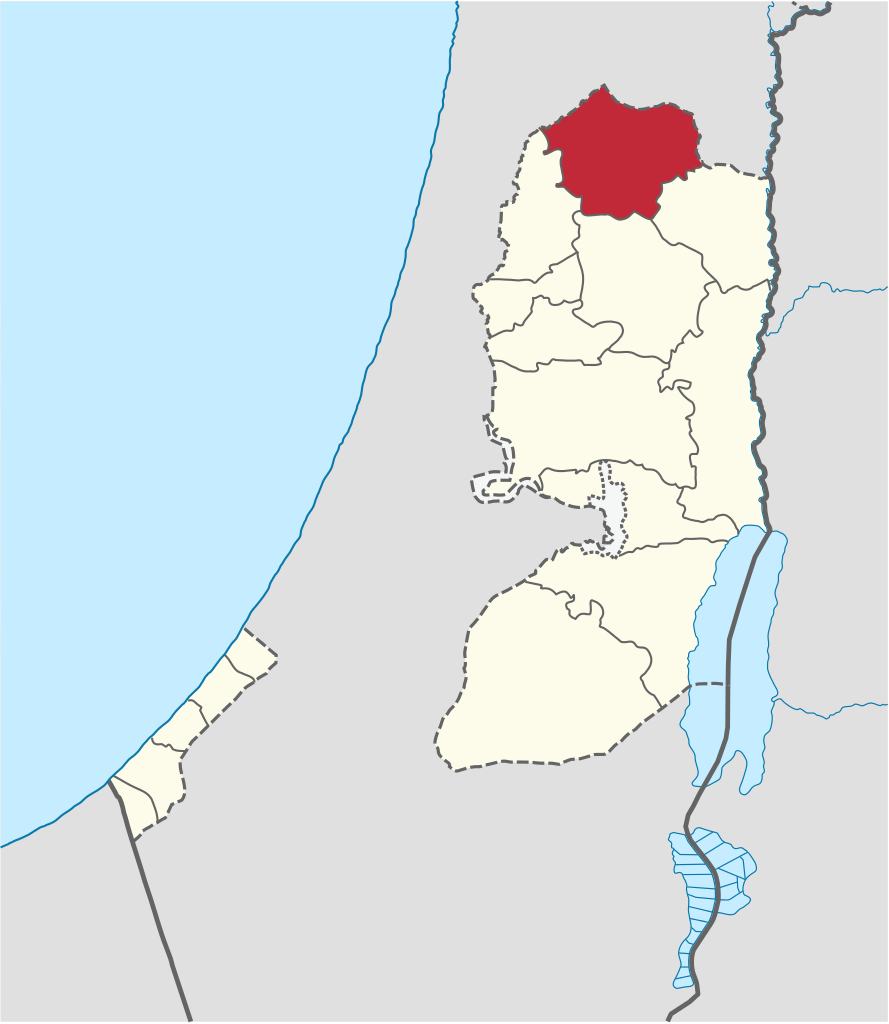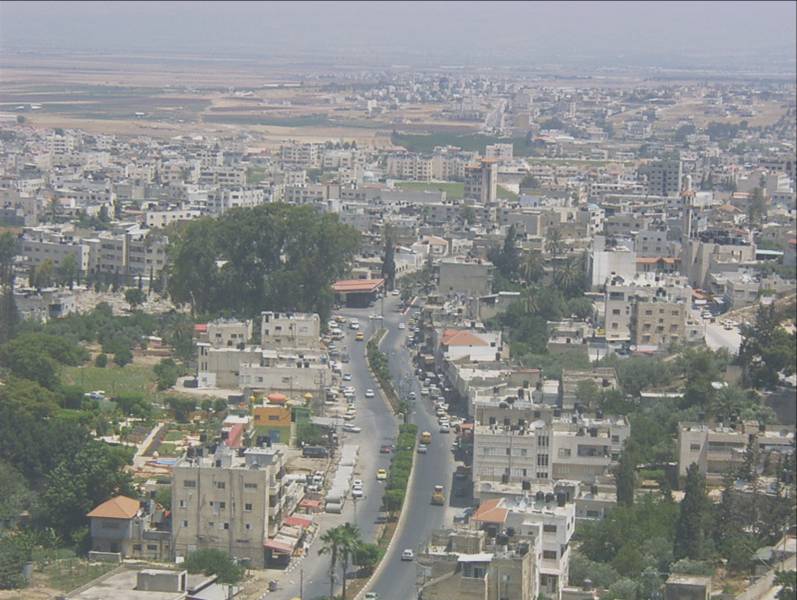The January 19 ceasefire between Israel and Hamas has so far provided some deserved relief for the families of many Israeli hostages and a moment of respite for the population of the Gaza Strip, after 15 months of bloody war. The truce, however, has not put an end to instability in the Middle East, especially in the Palestinian territories. Since the ceasefire entered into force, the epicenter of tension seems to have moved to the West Bank, and in particular to Jenin in the north. This shift captures most of the tragic challenges that characterize the increasingly difficult quest to restart the peace process between Israel and the Palestinians.

Gaza was in fact the most important of a series of Israeli military engagements launched as a result of the October 7, 2023 terrorist attacks perpetrated by Hamas. Other theaters where Israel has intervened militarily since October 2023 include Lebanon, Syria, Yemen, Iran and the West Bank. In fact, the fragile ceasefire agreed upon by Israel and Hamas in January follows another – equally precarious – agreement between Israel and the Lebanese militia Hezbollah. After a dramatic escalation between September and November 2024, a ceasefire between Israel and Hezbollah has indeed restored some stability in Lebanon, although many key provisions of the deal have not yet been implemented, and the risk of renewed conflict is still significant. Israel has also carried out strikes in Syria, Yemen, and Iran. These operations have been directed against the Tehran regime and other components of the “Axis of Resistance,” such as the Houthis in Yemen.
As already mentioned, however, the West Bank is becoming the most relevant theater in the vicious circle of violence that has been shaping the Middle East since October 2023. The area has seen a dramatic rise in clashes and fatalities since the beginning of the conflict between Israel and Hamas. According to UN data, at least 35 Israelis and 770 Palestinians have lost their lives in the West Bank between October 2023 and February 2025. On the Israeli side, 15 of the 16 civilian victims were inhabitants of settlements created in the West Bank, while the remaining 19 were members of Israel security forces. Among the Palestinians, at least 77 victims lost their lives in Jenin – an area situated in the northern part of the West Bank and populated by around 60,000 individuals.
Jenin has historically been a center of Palestinian resistance, and since the Arab-Israeli war of 1948-1949 hosts a major Palestinian refugee camp. Just a few days after the Gaza ceasefire entered into force, Israel launched a major intervention in the area – codenamed “Iron Wall” – that involved the use of military troops and police personnel, as well as units of Shin Bet – Israel’s internal security service. The operation has led to the killing of at least 10 Palestinians and, according to the mayor of Jenin, to the destruction of 120 buildings and the displacement of 15,000 people.

Operation “Iron Wall” was in fact the latest chapter in a story of instability and violence that has inflicted tremendous suffering on a great many Palestinian civilians. Jenin had already been the target of an Israeli intervention. In August 2024, Israeli forces carried out an operation that lasted 9 days and led to the death of 36 Palestinians. In December 2024, moreover, the security forces of the Palestinian Authority – commonly referred to as the PA – launched operation “Protect the Homeland”, a major effort to crack down on the militias and terrorist organizations that operate in the West Bank. The Jenin refugee camp was a major target of this operation, which led to the death of at least 13 people, including six PA security officers and one gunman.
Several factors explain the vicious cycle that has been developing in Jenin and the West Bank as a whole. The list includes a confluence of local terrorist activities and infiltrations from the Gaza Strip, support from regional actors such as Iran, the weakness of the Palestinian Authority and the impact of Israeli settlements in the West Bank.
The area has been infiltrated by Hamas and Islamic Jihad operatives from in the Gaza Strip. These militants constitute a major component of the “Jenin Brigades,” a terrorist umbrella organization based in the northern part of the West Bank – along with other local groups such as the “Lion’s Den”, based in Nablus. As claimed by US and Israeli intelligence services, moreover, Iran has promoted the smuggling of weapons into the West Bank. This operation takes multiple routes, including Jordan, Syria, Iraq and Lebanon, and relies on actors such as militias and criminal gangs.

Terrorist activities, infiltrations and weapons smuggling are favored by the weakness of the Palestinian Authority. This institution was created as a result of the Israeli-Palestinian peace process launched with the 1993 Oslo Accords. The goal of the PA is to form a nucleus of governance for the Palestinian territories and gradually favor the creation – alongside Israel – of a Palestinian state in Gaza, the West Bank, and East Jerusalem. This process is known as the “Two-State” solution and represents the proposal to solve the Israel-Palestine conflict endorsed by the international community. The PA, however, has been characterized by ineffectiveness and corruption, and has failed to live up to its promise to implement the Palestinians’ right to representative government. Opinion polls suggest that both the PA and its president – Mahmoud Abbas, who has held this position since 2005 – are quite unpopular and are perceived as inadequate to protect ordinary Palestinians. Operation “Protect the Homeland” can be in part read as an attempt on the part of the PA to boost its credentials as a competent and reliable institution deserving a role in the reconstruction of the Gaza Strip – a portion of the Palestinian territories that was exclusively controlled by Hamas from 2007 until 2023. The fact that this operation implied clashes between Palestinian factions and led to significant civilian casualties, however, might have further eroded the popularity of the PA in the eyes of the Palestinian public.
Another crucial factor fueling the vicious circle of violence in the West Bank is the failure to fully implement the provisions of the Oslo Accords and the presence of Israeli settlers in the West Bank. The West Bank – along with the Gaza Strip and the Golan Heights – was occupied by Israel as a result of the 1967 Six-Day War. According to the Oslo process, in order to implement the “Two-State solution”, Israel must gradually withdraw from occupied territories and let the PA take over administrative and security duties in order to create the Palestinian state. The accords stipulated that the Palestinian territories would be divided into three “Areas” – A, B, and C. Area A (18% of the territory of the West Bank) would be completely controlled by the PA. Area B (22%) would be administered by the PA but security would be managed by Israeli authorities. In Area C (60%), administrative and security tasks would be performed by Israel. While Israel unilaterally withdrew from Gaza in 2005, the provisions of the Oslo process concerning the West Bank have not been implemented. As these lines are written, the PA has full control over only 18% of the territory of the West Bank – Area A, which corresponds to a series of enclaves created around the major urban centers.

In addition to the failure to implement Israel’s gradual withdrawal from the West Bank, the territory has seen the expansion of Israeli settlements. Settlements began to develop in the West Bank and Gaza in the aftermath of the 1967 war. Some were created for strategic and security purposes, others for ideological and religious goals. In recent years, some Israelis were drawn to the settlements for economic reasons, such as the lower costs of living. While the settlements located in the Gaza Strip were dismantled as a result of the 2005 disengagement, those in the West Bank and East Jerusalem have been growing very significantly in the last decades. Today, according to UN data, there are 279 Israeli settlements in the West Bank and East Jerusalem. The population of these settlements has reached 700,000. Settlements are illegal according to international law – as confirmed by the International Court of Justice in July 2024 – and they clearly undermine the “Two-State solution” and the peace process endorsed by the international community.
Since the beginning of the settler movement, some Israeli settlers have committed acts of violence against the Palestinian population, and in many cases these acts have resulted in the destruction of property as well as significant casualties and fatalities. Sometimes, even Israeli service members have been the target of settler violence. While Israel’s security services are aware of the danger posed by extremism and violence within the settler movement, Israeli authorities have often proved incapable or unwilling to prevent or pursue settler violence against the Palestinians in the occupied territories. Since the October 7, 2023 terrorist attacks against Israel, acts of violence committed by settlers against Palestinian civilians have significantly increased. According to UN data, since the beginning of the conflict, clashes between the settlers and the Palestinians have resulted in casualties, damage to property and the displacement of at least 1,600 Palestinians. As mentioned above, 35 Israelis (including 15 settlers) and 770 Palestinian have lost their lives in this tragic and dangerous escalation. The Israeli government led by Benjamin Netanyahu relies on a parliamentary majority in which far right nationalist and religious parties represent a fundamental component. Some prominent members of the government – such as Finance minister Bezalel Smotrich – are staunch supporters of the settler movement. Smotrich is also in charge of the civilian administration that Israel has created to administer the occupied territories.
The recent increase in violence that has affected the West Bank and sees Jenin as its epicenter has thus long-standing roots that have been exacerbated by the security imperatives – but also the shock and rage – generated by the October 7 terrorist attacks carried out by Hamas against Israel. The West Bank is being increasingly infiltrated by terrorist organizations based in the Gaza Strip and supported by Iran and the “Axis of Resistance”. The shortcomings of the current Palestinian leadership are favoring the rise of discontent and frustration among the Palestinians. The failure to implement the Oslo peace process and the “Two-State solution” is structurally weakening the Palestinian Authority. The expansion of Israeli settlements in the West Bank and the increase in extremism and violence on the part of some settlers, along with the failure of Israel’s authorities to adequately prevent and punish it, are providing radical jihadi terrorist organizations and their sponsors with the opportunity to portray themselves as resistance movements.

The spike in violence that is hitting Jenin and the West Bank is magnifying the extremely intricate structural challenges that characterize the Israel-Palestine question. The storm of war and destruction generated by the October 7 terrorist attacks – with the death of around 1,200 Israelis and more that 48,000 Palestinians – has demonstrated that the failure to address these challenges can lead to unspeakable tragedies. The scale of these tragedies indicates that the only way to break the cycle of violence goes through a comprehensive effort to overcome these monumental obstacles and resume the peace process.
Diego Pagliarulo
